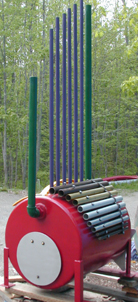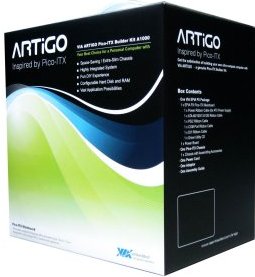If anything I suppose I’m changing back to the underdogs as the service providers, slingshot and vodaphone, were the underdogs when I first did internet and mobiles but now I’m going to Orcon and 2degrees… as well as changing to Linux as my operating system on the new ‘puter.
I think it’s important to do things like this, for obvious reasons and also for the less obvious ones. Obvious is that they offer better service as they build up their… what the word.. corporate identity? nope thats wrong… you know, their public personna… better, anyways the newer companies have to build a reputation for reliabitlty so they work harder, just like me who’s just had my first art show in years and years and my first one for decades in a dealer gallery. I’m not sitting on the pigs back and just counting the money comin’ in. I’m aware I have to build up a reputation for reliability and keep getting better. I’m an underdog even if my works as good as the big dogs, maybe even better… I’m unproven in the market… so I gotta work hard and fast and do work that keeps giving long after I’ve been paid and the monies are spent.
Less obviously and beyond the boundaries of realism and pragmatism is the idealism of the thing and this should come first but its less obvious in todays climate of capitalism but much more important to me. Idealism should always be the first motivation, in my book, and should be supported by pragmatic notions so the gestalt or even dialectic occuring is one that grows stronger with time and input. Idealism supporting pragmatism is like water going down a drainhole, ever diminishing circles with the only end being going down the hole.
So the smaller companies trying to build empires are fuelled by an idealism the bigger companies have lost while the whole area of open source software is a new paradigm where the pragmatism of the economy has been replaced by ideals supported by a pragmatism of a wholely new set of parameters… the ideas behind open source are far more organic and tied to a sense of reality where unbridled capitalism has had it’s day and the new way is that we have more than enough and now we have time to spread the advantages that we’ve been able to acheive. It’s the third wave in Toffler speak.
So what has all this to do with changing internet providers, mobile network providers and using open source software. We vote with our economic choices in a global economy. Where our money goes our power goes along for the ride. This is the idealism and supporting that is that the underdog works harder to provide and in doing so we pragmatically end up with better tools.
Case in point was that I have a new laptop that came with XP but minus the drivers for the machine. I understand that. The guys I got it from reformatted the hard drive and loaded XP which is the easiest way to get something workin’ and be able to sell it cheap. He left it to me to download 100Mb of drivers and wait for the ‘puter to install them through multiple restarts and bloody boring boring clicking through menus that windows seems to be so good at. Bang, all thats done so I try the thing with CD’s and DVD’s and I get the pictures, in windows media player, but no sound. Now if you know windows then you’ll be aware of the control panel and all those circling sub menus that lead to driver enabling and back to the devive managers… unending!
My point being that everything was enabled and all the sound mixer settings for record and playback were saying they were working. Turns out that the windows media player has two sets of volume controls and the second one is beneath the obvious one on the skin… it’s at the bottom of the play menu?, not tools, but play and it’s default muted.
Okay, in a round about way I can see the advantages of that but it’s a typical windowy type thing that can take hours of pissing about just to figure out. It’s stupid!
So it now plays wave files, CD’s etc, but hasn’t got sound on DVD’s and I can’t be bothered with trying to understand loading a bunch of video codecs to media player… I’ve just downloaded VLC and until I do a little more research on compatibile programs for LInux I’ll go with XP.
One thing I have found, though, over time is that the ability to make these changes, which used to dreadfully painful back at the beginning of this century, are now very streamlined and simple to manoeuvre (had to look that up) through. The result of competition keepin’ the old boys on their toes as the underdogs streamline things to make things easier for new callups to the front.
Now down to the nitty gritty. To be able to record on the fly, which really interests me, I’ve got two tiny little Behringer condensor mics that run on phantom power and I’ve also got a Paia schematic for the 9407 tube mic pre which uses a 12AX7 tube and a bunch of opamps and a 4049cmos chips as a way to take a 15VDC input and make it into 48VDC for the phantom power and a reasonable voltage for the tube anodes. The whole thing runs on 12VAC so my only constraint is to be able to modify the schematic to run on something using batteries. My initial hope was to be to use the power available on a USB port which is 5VDC but that just ain’t going to do it for me so maybe I’ll go to a pack of 9V rechargables and by using 4 I could get +18 and -18 or even two 12V sealed lead acid rechargables for +12 and -12 which would be cheaper but a little bulkier.
Then with a good battery in the laptop feeding that and the AD/DA of the Behringer UCA222. Then the Paia tube pre and some batteries and the two Behringer mics I’ve got the absolutely excellent way to record noises in the enviroment… like my drive into town to do Vitamin S and then playing it as background when I perform…
Easier and possibly what I’d actually do first off is use this other condensor I have that runs off one 1.5V battery and have a simple mic pre like I put on a previous post running on about 10V and using the USB with a simple voltage doubler… which ain’t so simple as one has to convert DC to AC with 4049 oscillators then double it as per normal… but still that’d be a tiny little box.
On a more pragmatic note, but still driven by Idealism of course, I’m instrument making today. I got a good sized Wok from Super trash and because I’ve already got one at home I’m going to weld them together for a sound chamber and then weld up a neck for a stringed instrument. There are multiple little incidences that are driving this, as I suppose one could say that the miracle of Idealism is that it is often parallel’d with multiple coincidence or should I say Seredipity, and it started with a very old friend coming round, Chris of the original Burgeria fame, wanting to build a guitar from a hubcap and seeking my advice, Ivan ringing me about… why did he ring?, initially he offered me an’ ol’ Roland sequencer, oh, thats right, my impressions of Ema at Fresh gallery in Otara, after he met her somewheres and she said he could put forward a… forgotten the word, um, well, an exhibition plan… but then, during the call, we ended up talking about using weed cutter nylon as strings for instruments and I’d had that cross my mind a few days ago and then seeing a Sitar up close in an indian clothing shop in Papatoetoe during my walk from the train station after arriving back in town from the Friday night spent on Waiheke to see Felix’s band Harmonica Lewinsky, who didn’t actually play because he got sick, but was still an enjoyable foray into the land of the ever diminishing Hippy alternative Chic, and then actually buying the Wok at Super trash…what’yr going to do but go out and start welding after all those gentle nudges!
And after reading through all of the above I’d be an absolute bastard if I didn’t offer something actually useful and inspiring wouldn’t I?
Given to me by Bryan of the Mojave desert who enjoys, like I do, swapping little packets of real silicon, and a little germanium, across the Great and Noble Pacific Ocean.

Instruments for childrens museums
I love the Chimosaur and can’t wait to see one strapped to my roofrack!











